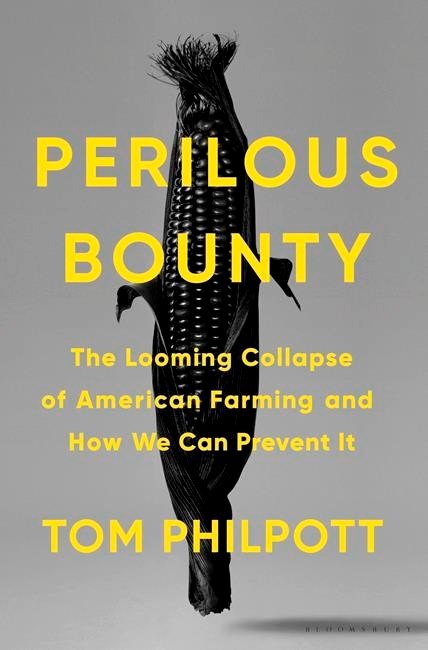“Perilous Bounty: The Looming Collapse of American Farming and How We Can Prevent It,” by Tom Philpott (Bloomsbury Publishing)
Americans long have taken abundant and cheap food for granted, blessed as we are by millions of acres of fertile farmland, particularly in California and the central states.
Those farmlands, and our food supply, are tipping toward grave risk unless we modify our farming habits, author Tom Philpott says in “Perilous Bounty: The Looming Collapse of American Farming and How We Can Prevent It.”
He makes a solid case that our intensive, industrial farm practices are draining California aquifers and causing severe fertile soil erosion in the Plains states.
Both practices ultimately will be catastrophic, he writes.
Some arithmetic:
— Between December 2004 and November 2013, the Colorado River basin lost almost 53 million acre feet of underground water.
— Iowa farmland in losing topsoil to runoff faster than it can be replenished.
— The water table in many parts of California’s vast and productive central valley has sunken to 100 feet.
— 200 million pounds of pesticides are used annually in California alone.
The book acknowledges a body of news reporting on this issue but deftly pulls together the whole crisis. Philpott is a veteran reporter for Mother Jones magazine and he has himself been a farmer, so he knows the language of agriculture.
“Perilous Bounty” presents several farmers in California and Iowa who have figured out how to grow crops profitably without either draining the aquifers or allowing annual top soil runoff, but fellow farmers tend to see these growers are curiosities at best.
Moreover, the book cites university researchers who have shown that we can maintain high-crop yields while reducing fertilizer use by restoring biodiversity; for example, planting oats, alfalfa or clover rather than leaving bare Iowa soil open in winter to rainwater runoff.
However, as Philpott notes, the agribusiness industry as it has evolved in the United States is controlled by a few giant corporations and the flow of billions of dollars in government payouts and crop insurance programs that keep central states’ farmers locked into corn and soybean-producing programs year after year.
Meantime, the evidence Philpott and others before him present is clear: Not only must we significantly alter our farming practices but we also must address the causes of climate change if we are to avoid ruining our farm land and turning from a nation of vast agricultural bounty to a land unable to produce enough food for its people.
Will we have the political will to demand a revolution in American agriculture to systems that will preserve aquifers and topsoil?
Don’t bet on it. As Philpott points out, agribusiness interests spend $100 million each two-year federal election cycle.
Jeff Rowe, The Associated Press



